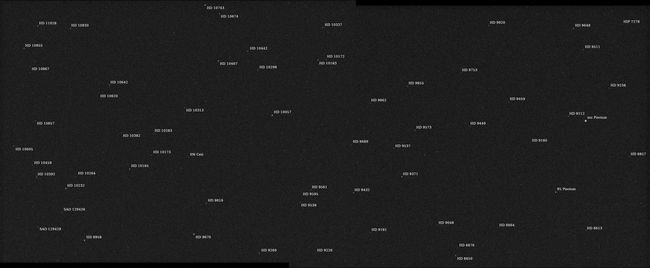Raw mosaic data from Psyche cameras set the stage for future discoveries
December 4th was an important day for the Psyche probe when it «opened its eyes» to the Universe. Since launching on a SpaceX Falcon Heavy rocket on October 13 (Falcon Heavy's first interplanetary mission), Psyche has been traveling through space in the dark because its cameras had not yet turned on.
The probe is en route to the asteroid for which the spacecraft is named, 16 Psyche, located between Mars and Jupiter. Researchers are particularly interested in this asteroid because it is believed to be composed almost entirely of metal, namely iron and nickel — elements that are the main building blocks of the earth's core, the study of which is not accessible by direct methods.
December 5, the mission team announced that the Psyche cameras had officially captured the first photo in space. The photograph shows a mosaic of raw data acquired on December 4, which represents the stellar ensemble as seen from Psyche's position. «Raw data» means that background noise, such as extraneous light signals, has not been extracted from the image. The team will be working on tweaking the images in the coming days.
«These first images only lift the veil. For the team that developed and operates this complex device, the first light — this is an exciting and emotional moment», — said lead engineer of the Psyche imaging instrument, Jim Bell of Arizona State University.
The team will use images like these to test the performance of the Psyche camera and prepare for a brief flyby of Mars in 2026, when the probe's cameras will take some photos of the planet, Bell said.
«And in 2029, breathtaking images of our goal await us — asteroid 16 Psyche. We look forward to sharing these visuals with the wider public» — Bell added.
The technical details of the image are as follows: It consists of 68 separate images, including objects from the constellation Pisces, which the cameras focused on when turned on. The image size is approximately 8 degrees in width by 3.5 degrees in height. Cameras Imager A and Imager B created the left and right halves of the mosaic, respectively. After acquiring several of these images and calibrating them, the Psyche team will fine-tune the machines before collecting data on their target. The resulting visual and spectral data will help create 3D maps of the asteroid.
The Deep Space Optical Communications (DSOC) device Psyche recently also «saw the light», sending a laser signal to Earth from a distance of about 10 million miles (approximately 16,093,440 kilometers).
The team now awaits December 11th, when neutron radiation detectors will be activated to analyze the chemical composition of asteroid 16 Psyche — this will be a key point in this mission.

